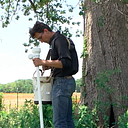5 Proven Strategies for Using Sales Automation for Revenue Growth
In today’s fiercely competitive sales landscape, efficiency is paramount. Sales professionals are constantly bombarded with a high volume of repetitive tasks, such as data entry, scheduling meetings, and crafting follow-up emails. This consumes valuable time that could be better spent on strategic initiatives like building relationships with prospects and closing deals.
Sales automation has emerged as a powerful solution, enabling businesses to streamline workflows and empower sales reps to achieve greater productivity. By automating repetitive tasks, sales automation frees up valuable time and resources, allowing sales teams to focus on high-value activities that directly drive revenue growth. This blog explores five proven strategies for leveraging automation for revenue growth within your sales organization.
The Power of Automation for Sales Success
Sales automation empowers businesses to streamline repetitive tasks and maximize sales efficiency. By automating activities like data entry, scheduling meetings, and sending follow-up emails, automation frees up valuable time for sales reps to focus on strategic activities like building rapport with prospects, crafting compelling sales pitches, and ultimately closing deals.
Furthermore, automation plays a crucial role in driving data-driven sales. Integration with CRM (Customer Relationship Management) systems allows for the capture and analysis of valuable customer data. This data can then be leveraged by sales automation tools to personalize outreach, prioritize leads based on pre-defined criteria, and gain deeper insights into customer behavior. Additionally, Artificial Intelligence (AI) is making significant strides in sales automation. AI-powered tools can automate tasks like lead scoring, personalize communication at scale, and even assist with basic negotiation tactics for less complex deals. By harnessing the power of automation and AI, sales organizations can gain a significant competitive edge and unlock substantial revenue growth.
5 Proven Strategies for Sales Automation and Revenue Growth
Leveraging automation for revenue growth requires a strategic approach within your sales organization. Here are five key strategies to consider:
Lead Generation and Qualification
- Streamlined Lead Capture: Automation simplifies lead generation through tools like web form automation, website chatbots, and social media marketing platforms. These tools capture lead information seamlessly, reducing manual data entry and ensuring accurate prospect data within your CRM.
- AI-Powered Lead Scoring: Lead scoring software powered by AI analyzes lead behavior, demographics, and engagement levels. This enables sales reps to prioritize high-potential prospects based on pre-defined criteria, focusing their efforts on leads most likely to convert.
Lead Nurturing and Engagement
- Personalized Email Sequences: Marketing automation tools allow for the creation of personalized email drip campaigns tailored to lead behavior and interests. These automated sequences nurture leads throughout the sales cycle, providing valuable content and maintaining engagement until they are ready to convert.
- Automated Content Delivery: Based on lead interaction and preferences, automation can deliver targeted content resources such as white papers, product demos, or case studies, further educating leads and moving them closer to a purchase decision.
Opportunity Management and Pipeline Visibility
- Automated CRM Tasks: CRM systems with automation capabilities streamline opportunity management. Data entry, activity tracking, and reporting can be automated, minimizing manual effort and ensuring data accuracy.
- Real-Time Pipeline Insights: Automation provides real-time visibility into your sales pipeline. This allows for better forecasting, proactive sales management, and the identification of potential bottlenecks or delays within the sales cycle, enabling faster adjustments and improved conversion rates.
Quote Generation and Proposal Creation
- Customized Quote Templates: Automation tools can generate customized quotes and proposals based on pre-defined templates populated with product data and customer information. This reduces errors and streamlines the sales cycle, allowing for faster quote delivery and improved customer experience.
Task Automation and Sales Productivity Enhancement
- Automated Administrative Tasks: Automate administrative tasks like scheduling meetings, sending follow-up emails, and updating CRM data. This frees up valuable time for sales reps, allowing them to focus on building relationships with prospects and customers.
- Focus on Strategic Activities: By minimizing the time spent on repetitive tasks, automation empowers sales reps to engage in strategic activities like crafting compelling sales pitches, negotiating deals, and building long-term customer relationships, ultimately leading to higher closing rates and exceeding sales targets.
These strategies, combined with a data-driven approach, unlock the true potential of automation for revenue growth within your sales organization.
Implementing Automation for Measurable Results
Maximizing the impact of automation for revenue growth requires a strategic implementation process. The first step involves identifying repetitive, time-consuming tasks within the sales process that are ideal candidates for automation. This analysis allows for a targeted approach that streamlines workflows and minimizes disruption.
Selecting the right automation tools is crucial. A data-driven approach ensures compatibility with existing CRM systems and facilitates seamless data integration. This ensures data consistency and avoids information silos that can hinder sales effectiveness. Finally, ongoing training and change management are vital for successful adoption. Equipping sales reps with the necessary skills and fostering a culture that embraces automation empowers them to adapt smoothly to new workflows and maximize the benefits of automation for revenue growth.
Ending Notes
This blog has explored five proven strategies for leveraging automation for revenue growth within your sales organization. By implementing these strategies; lead generation/qualification, lead nurturing, opportunity management, quote generation, and productivity enhancement, you can streamline workflows, free up valuable time for sales reps, and empower them to focus on high-value activities that drive sales success. The transformative power of automation allows sales teams to gain a competitive edge, close more deals, and ultimately achieve significant revenue growth.
